The drivetrain on a bike enables you to pedal forward and typically change between gears, making it easier or harder for you to ride on a given gradient.
Put simply, your bike's drivetrain consists of the parts that move it.
Here, we describe the different bike components that make up a drivetrain and explain their functions.
What is a drivetrain?

In a wider context, the drivetrain is part of the groupset, which also includes the shifters and brakes. The easiest way to understand the function of a groupset is that it contains the parts that enable you to move and stop.
Although the drivetrain doesn’t include the shifters, the shifters are the component that controls the drivetrain when you change gears.
What parts are in a bike’s drivetrain?

The drivetrain almost always consists of a series of bike components that work together to enable you to change into different gears.
It typically includes one or two derailleurs, mechanisms that change gear when actuated at the shifter.
The chain is an integral part of many drivetrains. It passes through the relevant derailleurs and over the cassette and crankset, which contain your gear ratios and act as a point for you to drive force through the system when you pedal.
Not all bikes feature gears, such as singlespeed bikes, and some bikes use alternative systems, such as belt drives.
1x vs 2x

There is an increasing trend for the best gravel bikes and best mountain bikes to feature 1x drivetrains rather than 2x drivetrains, which are typically found on road bikes.
A 2x drivetrain has two chainrings and a front derailleur, whereas a 1x drivetrain forgoes a front derailleur and uses a single chainring.
1x drivetrains save some weight because they have fewer components, and there is also no need for a gear cable or electrical wire to route from the shifter.
1x chainrings often feature a ‘narrow-wide’ profile where the teeth alternate between narrow and wide, to better hold the chain.
The rear derailleur on 1x drivetrains will often feature a clutch mechanism, which increases the weight of the component, to help retain the chain and stop it slapping on the driveside chainstay.
Crankset
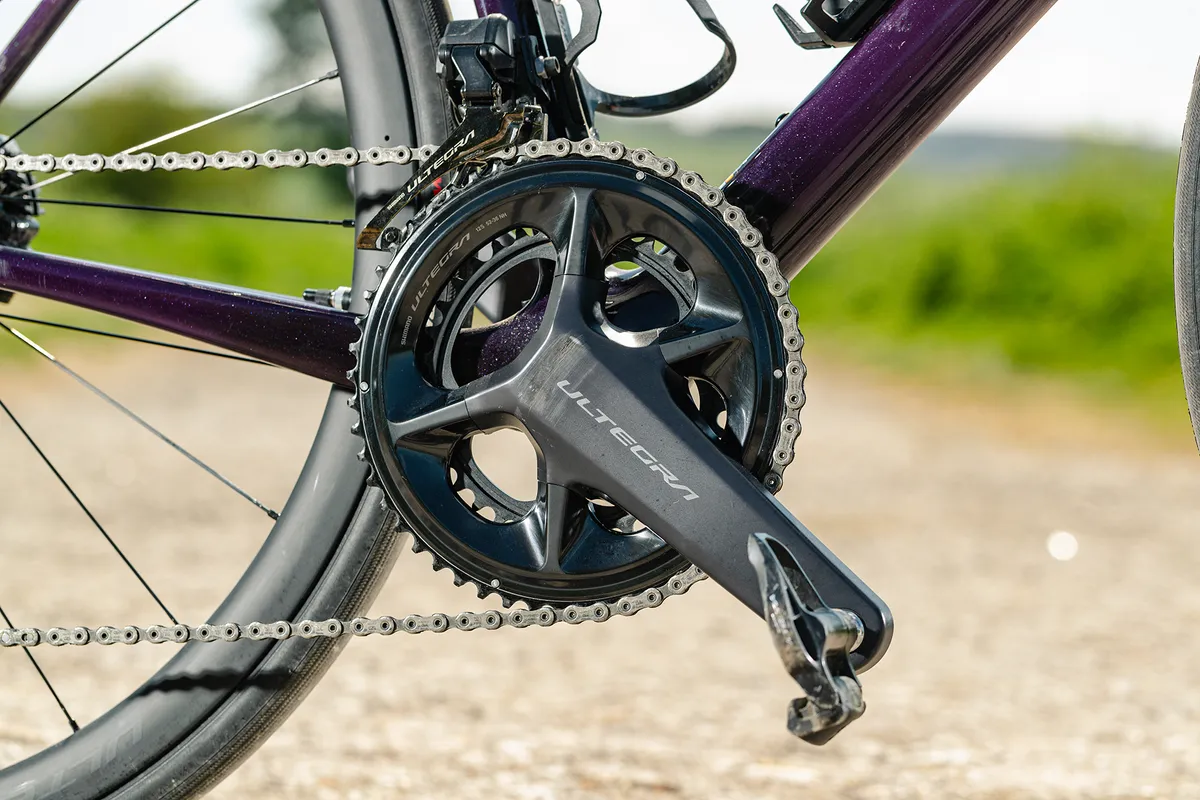
The crankset (often referred to as the ‘chainset’ and sometimes ‘cranks’) is the centrepiece of the drivetrain.
The crankset helps you move the chain as you pedal, transferring force from your legs to the rest of the drivetrain and ultimately to your bike’s rear wheel, helping you move forward.
Cranksets comprise of two crank arms with chainrings that the chain runs over.
The bottom bracket bearings allow the crankset to rotate smoothly and freely.
The crankset typically includes an axle or spindle that holds the entirety of the crankset together. However, some crankset designs, particularly older ones, do not include an axle or spindle, and this is part of the bottom bracket, instead.
Chainrings
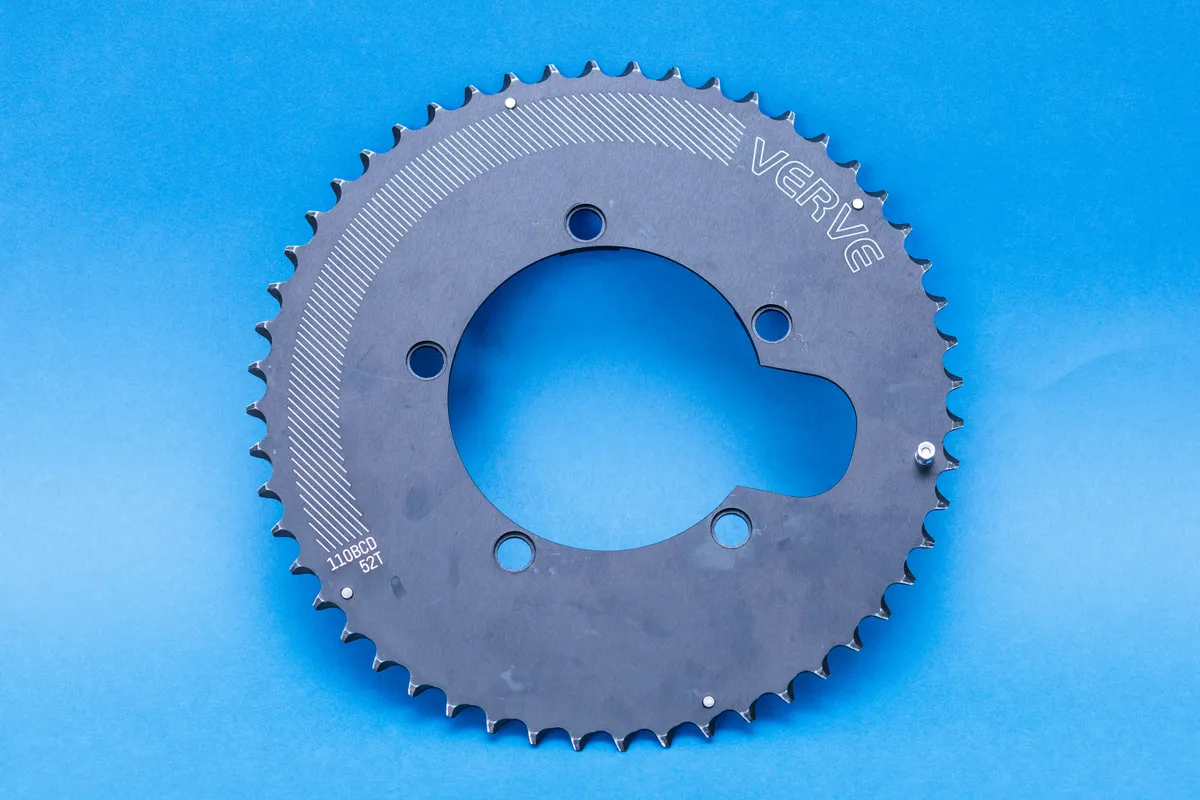
The chainrings are effectively your front gears and consist of teeth that hold the chain in place.
Bikes will typically feature between one and three chainrings.
It is worth considering the range of gears you would like to use in combination with your cassette.
Chainrings come in a range of sizes to suit all riding disciplines. The size of a chainring is determined by the number of teeth it has. For example, a 50-34 means the outer chainring consists of 50 teeth and the inner 34 teeth.
If you are running a 1x chainring, this will simply be listed as one number, such as 40t, denoting there are 40 teeth.
Cranks
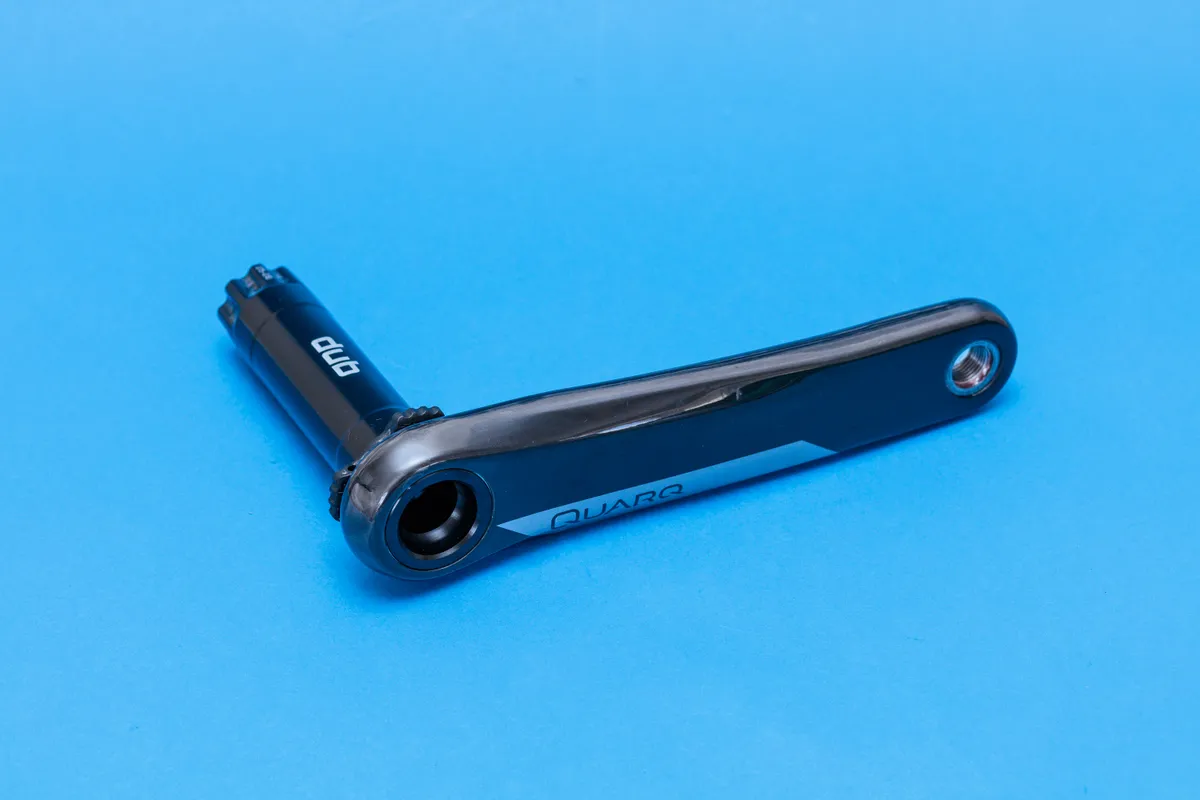
The crankset comprises two crank arms, which the pedals are attached to via a threaded section.
Cranks can be of different lengths, typically from 165mm to 175mm, with longer lengths giving you more leverage.
Crank length is typically specced according to the size of bike, and corresponding height. However, leg lengths can vary across different heights, so this could be an area to explore for optimal performance.
Front derailleur

The front derailleur is the mechanism that moves the chain between the chainrings on the crankset. As its name suggests, it derails the chain from one chainring and pushes it onto another.
The front derailleur is actuated by the left-hand shifter on most shifting systems. There are some exceptions with electronic groupsets, where you can often customise which buttons shift what derailleur via their respective apps.
Bikes that feature a single chainring don’t have a front derailleur. This is quite common with mountain bike gears and gravel bikes.
There are two different ways front derailleurs are mounted to the bike frame: band-on and braze-on.
Band-on derailleurs have a hinged metal part that fits around the seat tube of the frame.
Braze-on front derailleurs fix to a mounting plate that’s typically riveted onto the driveside face of the seat tube.
In terms of front-derailleur compatibility, you should stick with the manufacturer and series of the rest of your groupset.
Rear derailleur

The rear derailleur is the mechanism that shifts the chain at the cassette.
There are different types and designs of rear derailleur, but they all serve the same function and work in a similar way.
The component is actuated by the right-hand shifter on most groupset systems.
Rear derailleurs include a derailleur cage that houses pulley wheels (referred to in the UK as jockey wheels) that the chain wraps around.
Rear derailleurs will have a certain number of ‘speeds’ – generally from 7 up to 13.
Some rear derailleurs feature chain retention measures such as a clutch mechanism to prevent the chain from slapping on the driveside chainstay. This can be very useful when riding off-road and makes for a quieter ride.
Rear derailleurs typically attach to a bike’s frame via a derailleur hanger using a single bolt.
As with the front derailleur, you should stick with the manufacturer and groupset series your bike has because the cable pull (the amount a derailleur moves for every millimetre of cable pulled through by the shifter) of the shifter is specific to the rear derailleur.
Cassette
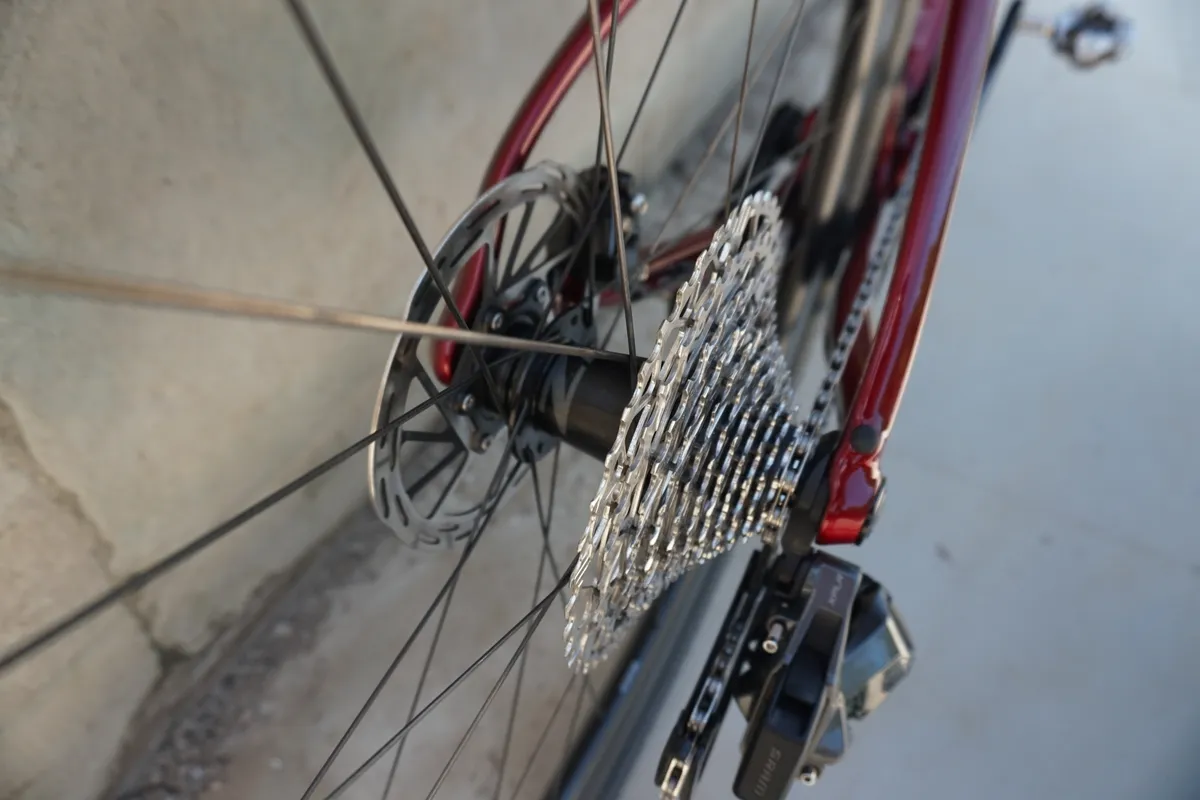
The cassette is a replaceable cluster of sprockets installed on the rear wheel. The rear derailleur moves the chain up or down the cogs.
Cassettes come in a wide range of sizes to suit all riding disciplines. The size of a cassette is usually expressed by quoting its smallest and largest cogs. For example, an 11-32 cassette means the smallest cog consists of 11 teeth and the largest 32.
Gravel and mountain bikes tend to have wider-ranging cassettes than road bikes. This is because gravel and mountain bikes tend to have 1x drivetrains and consequently the cassette has to provide easy gearing to winch yourself up steep climbs and gears that are big enough for fast riding on the flat and downhill.
Cassettes might have anything from 7 to 13 sprockets, depending on their intended use and manufacturer. The latest flagship road bike groupsets and mountain bike groupsets from Shimano and SRAM feature 12-speed cassettes. Campagnolo also sticks to 12-speed cassettes on the road but its Ekar gravel groupset is 13-speed, as is Ekar GT.
The cassette fits onto the freehub of the wheel. The inside of a cassette has notches that align with splines on the freehub.
Manufacturers and brands have different spline and cassette designs. It’s always worth checking you are buying the correct cassette for your freehub, or the right freehub for your cassette, when buying a new wheel. A full explainer on freehubs, how they work and their compatibility can be found in our guide to freehubs.
Chain

The chain is the component in your drivetrain that is subject to the most abuse, as it passes through all of the aforementioned components.
The chain is made up of a series of links, with most chains having alternating wide and narrow links in a pattern that repeats for the length of the chain.
Chains also have ‘speeds’ and you should use the correct chain for the number of speeds your groupset has. It’s also worth checking if a new chain is compatible with your specific groupset.
Chains wear through use. They stretch in length and side-to-side movement between links increases. They will often be the first part of the drivetrain that you need to replace.
If they are not replaced in time, chains can wear out the cassette and chainrings. These components are more expensive to replace than chains, so it’s worth keeping an eye on how worn your chain is and replacing it if need be.
We’ve got a detailed explainer on how to replace your chain.
Electric bike drivetrains
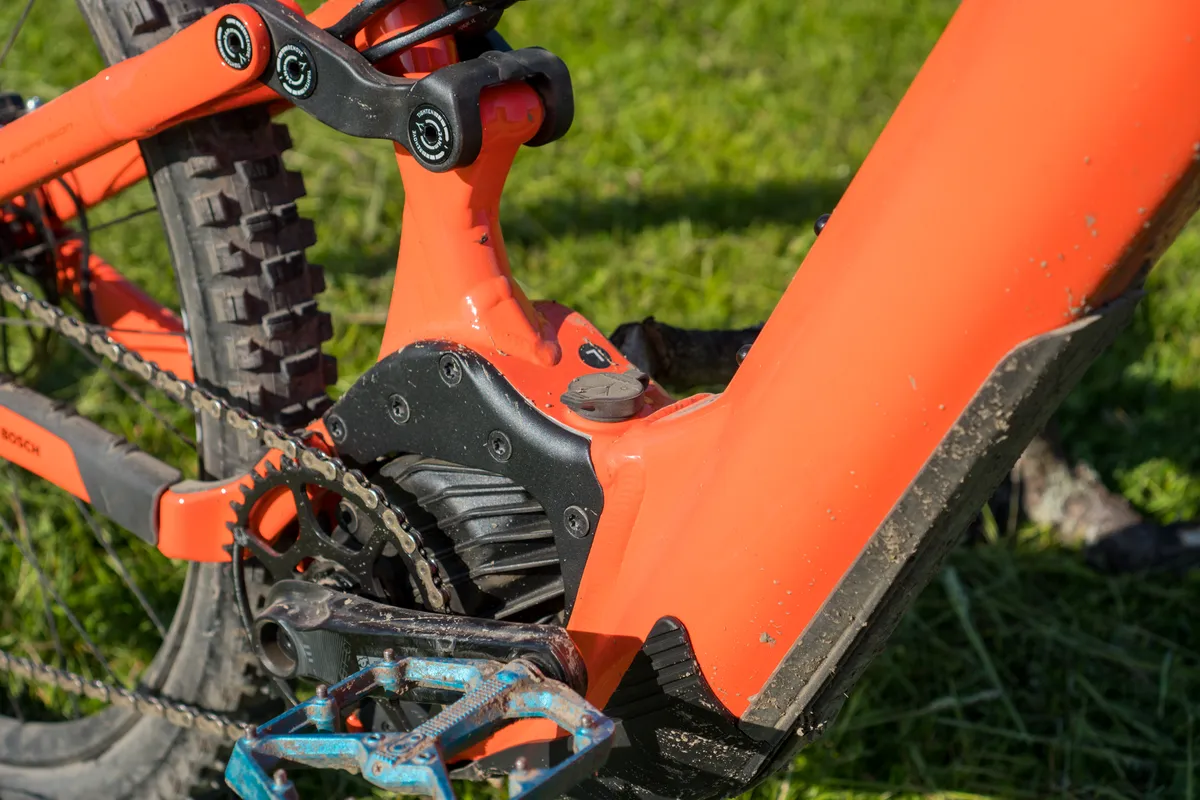
Electric bike drivetrains can sometimes differ from conventional, geared drivetrains on non-assisted bikes depending on the type of electric motor they use.
If a hub-based motor is used, electric bikes will almost always have a conventional, geared drivetrain.
If a bottom-bracket based motor is utilised, often found on the best electric bikes, then front derailleurs are often not compatible. The system will, therefore, use a 1x drivetrain. There are some exceptions, though.
Singlespeed and fixed-gear drivetrains

Singlespeed and fixie bikes have simpler drivetrains than other bikes without derailleurs, a cassette and shifters.
They typically consist of a wider chain, chainring and sprocket. They are more efficient because the chain doesn’t have to go through any derailleurs, which puts it at an angle and accelerates wear.
You’ll need to pick your preferred chainring and sprocket size wisely, based on the terrain you are riding.
Some singlespeed bikes feature freehubs, which allow you to coast, whereas others do not and you’ll have to keep pedalling no matter the gradient.
Hub gears

Hub gears are another popular drivetrain option and are often found on commuter bikes.
Rather than having derailleurs, the gears are incorporated into the hub of the rear wheel, resulting in less maintenance. However, they are heavier and maintenance is more difficult than derailleur gears.
Belt-drive systems

Some bikes use a belt drive instead of a chain. These are particularly popular with commuters because they tend to be cleaner than chains and consequently diminish the risk of getting clothes dirty. They are also increasingly found on electric bikes.
Belt-drive systems forgo a cassette and chainrings. They require less maintenance because they're not made of metal and thus do not need degreasing or lubrication.
Typically, these systems are quieter-running and more durable than other drivetrains, but they are less efficient, usually more expensive and spares can be more difficult to find.
